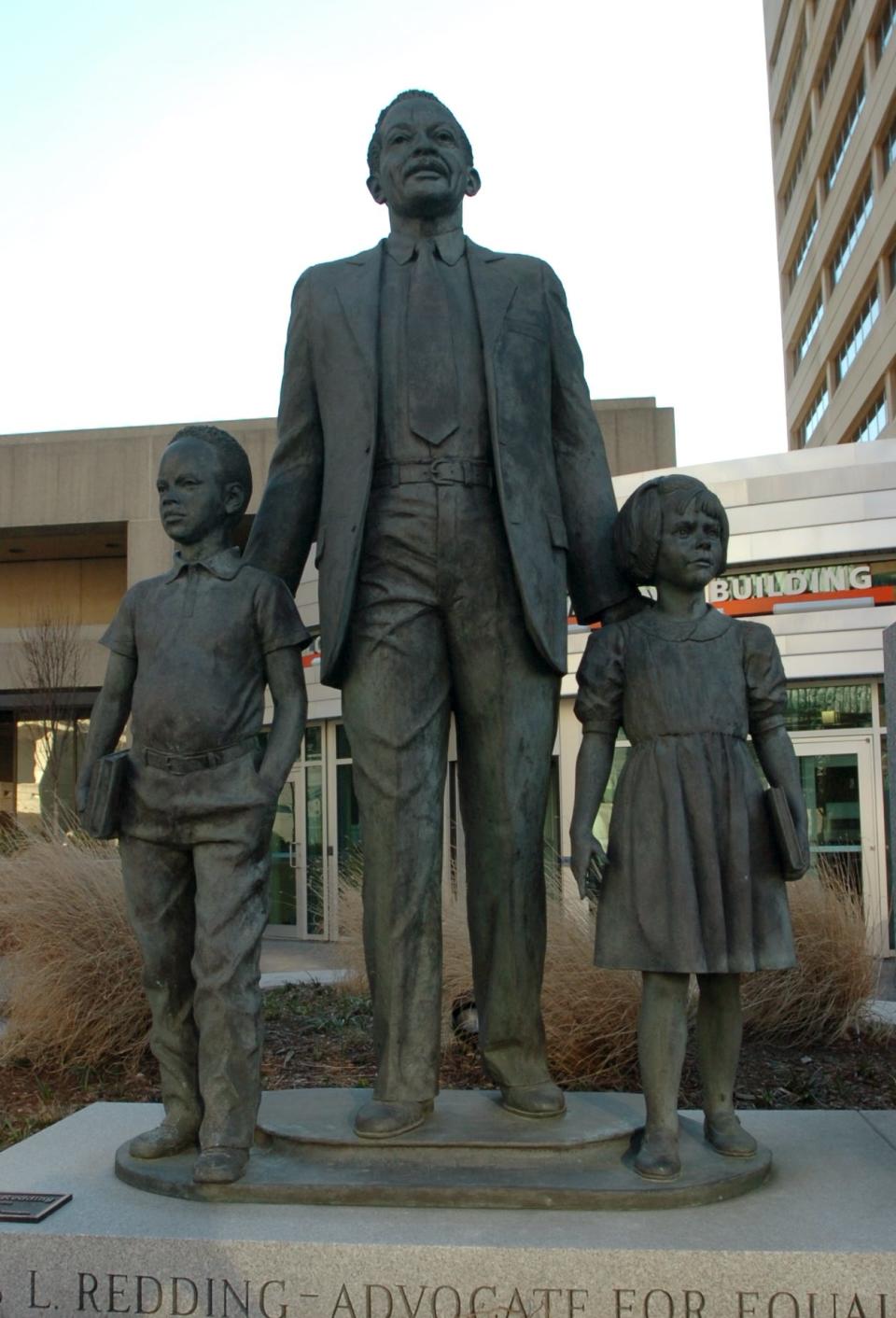Appoquinimink School District is proud to honor Louis L. Redding | Opinion
- Oops!Something went wrong.Please try again later.
On Tuesday, Dec. 14, Appoquinimink School District voters are being called to the polls to vote in favor of the school district and state rebuilding the existing Louis L. Redding Middle School. The current structure is well beyond its intended lifespan and suffers from numerous problems. There is no tax increase resulting from this referendum, as the district is able to pay its share of the costs with money it has saved for the otherwise needed repairs. In short, the district can get a brand new, state-of-the-art building for only the cost of repairs. However, state law still requires referendum approval by the voters, even though there will be no tax increase. The referendum is the proverbial “no-brainer,” but it is nevertheless important that residents turn out to show their support.
While the referendum itself is a no-brainer, one sad fact that has come to light during this process: far too many people don’t know who Louis L. Redding was, or why a school is named after him. This column is written to provide those answers and why our school district is proud to honor this great Delawarean and great American.
To begin, Louis L. Redding was Delaware’s first — and for 26 years it’s only — African-American lawyer, admitted to practice in 1929. It was such a groundbreaking event that a story and his picture appeared in both the Wilmington Every Evening and the Wilmington Morning News — the precursors to today’s News-Journal. Redding is not remembered and revered, however, for being simply being the first. Rather, it is what he accomplished thereafter.
In 1949, Redding brought the case that led to the integration of the previously all-white University of Delaware — the first time a major public university had been ordered to integrate in the United States. Yet his greater work was still to come.
In 1951, Redding was approached by the parents of Barbara Bulah, who wanted Redding to sue the State of Delaware so their daughter could receive bus transportation to Hockessin Colored School No. 107. Bus transportation was provided for white students to their schools, but no transportation was provided for African-American students. Bulah’s parents had even written the governor to no avail. Redding told the Bulahs that he wouldn’t help get a “Jim Crow” bus to a “Jim Crow” school; but that if the Bulahs were interested in sending their daughter to an integrated school, then he would be willing to help. That conversation led to the case of Belton v. Gebhart, in which the Delaware Court of Chancery, in another nationwide first, ruled that Delaware’s schools were not “separate but equal” and ordered that the public schools be integrated. The Delaware Supreme Court affirmed, and the Belton case was then appealed to the United States Supreme Court. There, it was joined with six other cases from around the country and became part of the Court’s unanimous ruling in Brown v. Board of Public Education. Significantly, though, the Belton case was the only one of the seven in which integration had been ordered. Another first for Louis L. Redding.

Redding’s third great case came in 1961 in Burton v. Wilmington Parking Authority. There, Redding represented one William “Dutch” Burton, an African-American who was denied service on the basis of his race at the old Eagle Coffee Shoppe, located in the old parking garage at 9th & Orange Streets in Wilmington. The coffee shop leased its space in the facility from the Wilmington Parking Authority, and the Supreme Court held that a governmental agency could not sanction such discrimination. Redding argued the case himself before the Court, and like the Belton and University of Delaware cases, the Burton case would have important national ramifications.
Redding’s legacy, then, is not only important for Delaware, but for our country as well. Ironically, the story goes that Redding did not want to practice in Delaware. Having graduated from Brown University and Harvard Law School, Redding had visions of a big city law practice. His father, though, had other ideas. Delaware needed his son, and he convinced his son to return to Delaware. We are all fortunate for that. The Appoquinimink School District is proud to have a school named in his honor, and proud to help support his memory and legacy.
Richard A. Forsten is a past president and 11-year member of the Appoquinimink School Board.
This article originally appeared on Delaware News Journal: Appoquinimink School District is proud to honor Louis L. Redding

